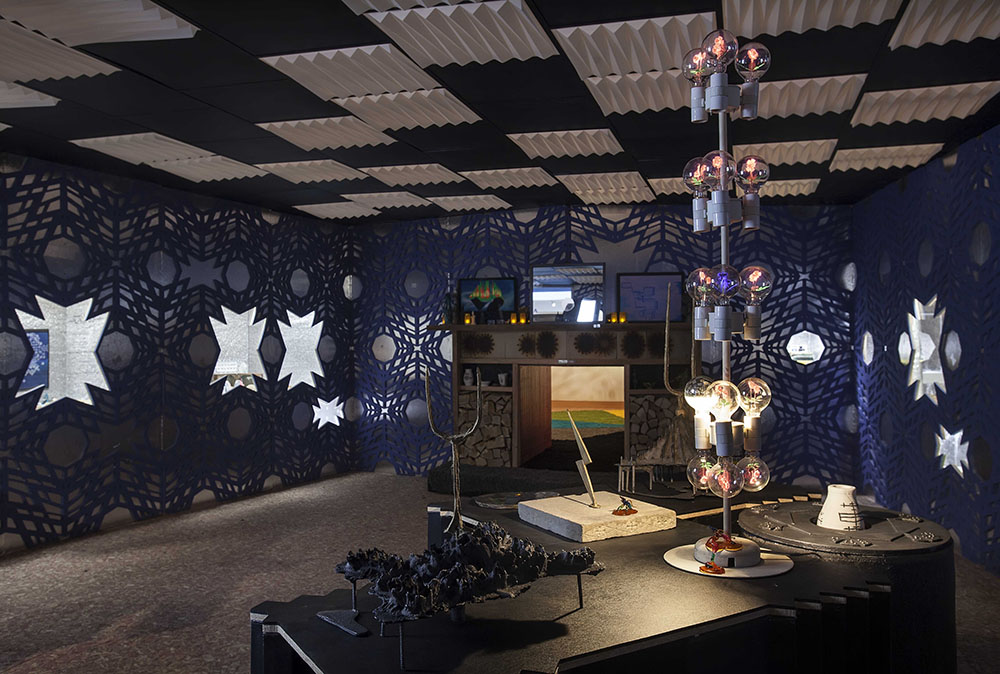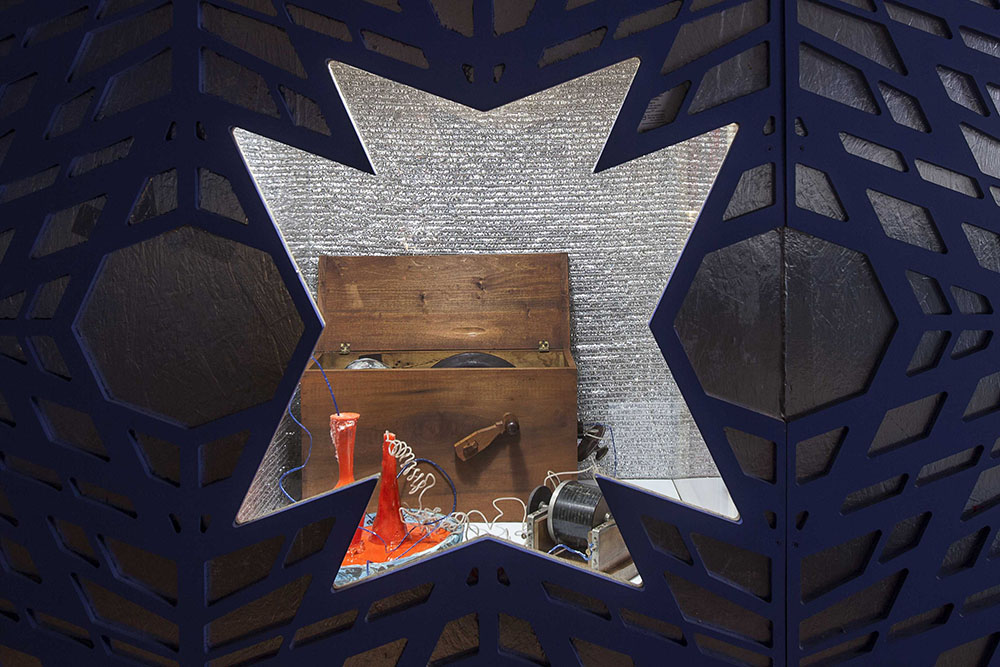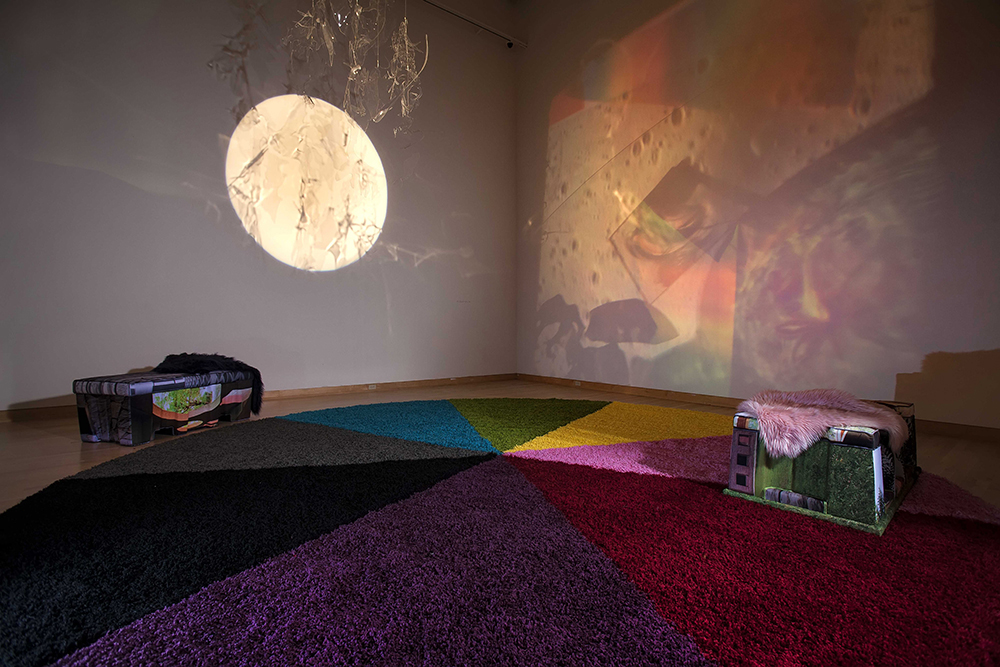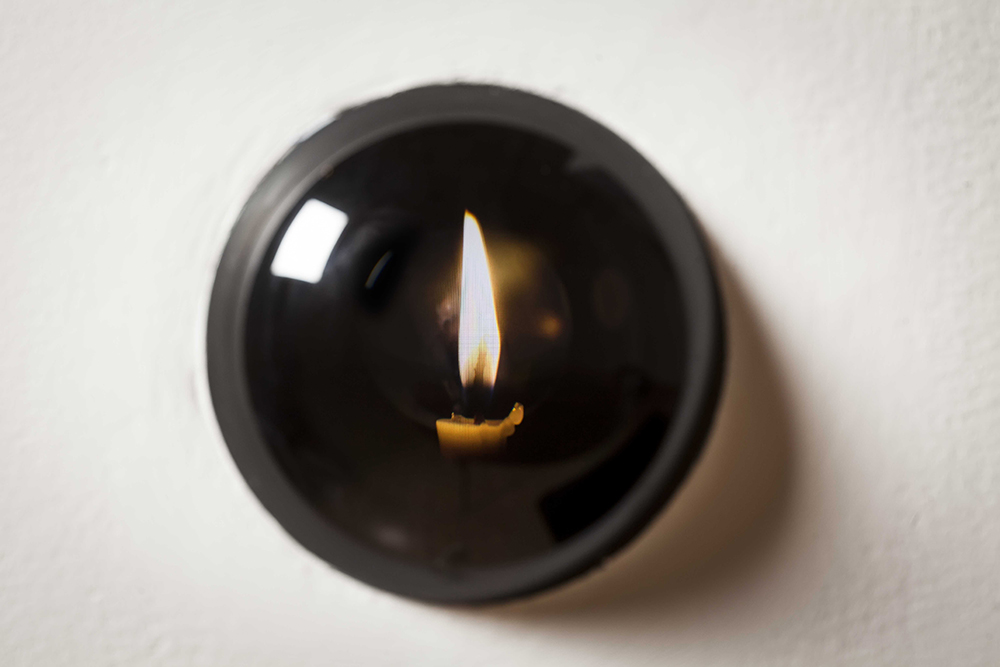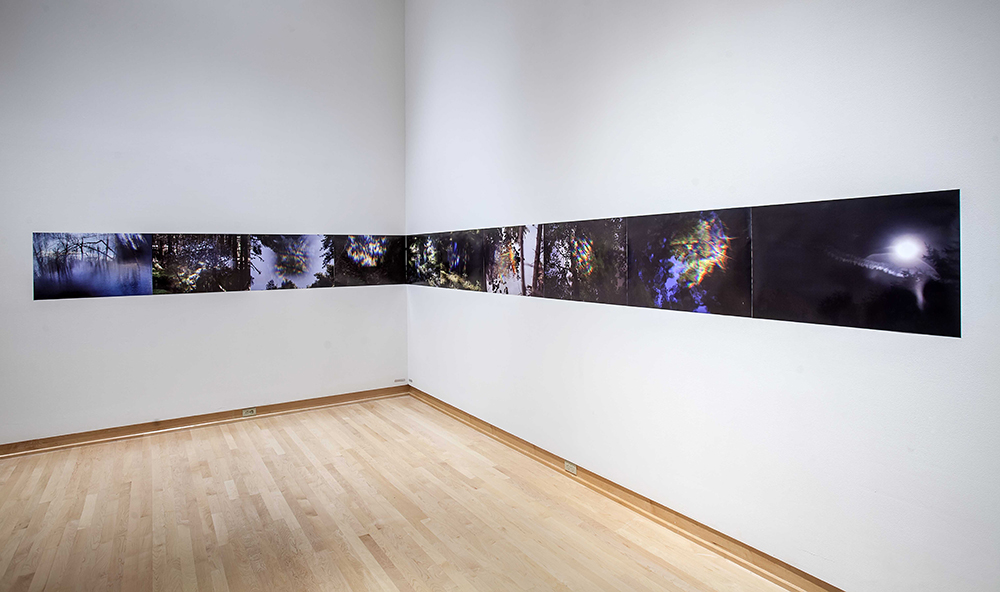Joy Feasley and Paul Swenbeck
Out,Out, Phosphene Candle
John Michael Kohler Arts Center, Sheboygan, Wisconsin
February 25-September 2, 2018
Although it may seem futile to some, there are ways to monitor our society’s trajectory, to envisage future scenarios. Skeptics are reluctant to believe that there are sufficient facts available today to reasonably predict a knowable future. To them, forecasting is akin to controlling the uncontrollable. What evidence is there to tell us that we are impacting generations to come? One person’s fact could be another’s fiction. There are, however, many who spend time picturing and planning for what is yet to come. For them, the world is not a fixed entity but an ever-evolving mass of competing and conjoining forces. It stands to reason for these people that—however elusive, mysterious, or controversial these forces are—being open to change is the easiest way to learn from the past and understand the bigger picture. No matter what side one finds themselves on, centuries of people have nonetheless developed methods and rituals to ensure a good future. Religion, scientific methodologies, self-care, or consulting psychics have all been employed to tap into a future version of ourselves and make adjustments to our daily lives.
Throughout their thirty-five year collaboration, Philadelphia-based artists Joy Feasley and Paul Swenbeck have looked to the future, imagined possible worlds, or conceived of parallel universes as a way to grapple with current worldly circumstances. Through their large-scale and highly detailed installations, Feasley and Swenbeck offer glimpses into what our world might look like under different circumstances. Using their own works of art, archival documents, or materials borrowed from lesser- known historic sites, they construct unprecedented perspectives, and propose worlds that differ from our own.
Voracious researchers and consummate creatives, they build environments that combine their passion for magic, history, the occult, secret societies, ecology, semiotics, science fiction, and folklore. Most importantly, they explore how these theorists and practitioners intermingle despite divergent doctrines, all in an attempt to prove something fundamentally unknowable—what the future holds. Even the most studied scientist has to make a hypothesis without truly knowing the outcome. Feasley and Swenbeck are at ease knowing there is great mystery circulating in the world and construct futuristic, immersive environments that embrace the inexplicable.
For their most ambitious installation to date, Out, Out, Phosphene Candle, Feasley and Swenbeck used a recent dream as a starting point. In this extremely vivid dream, Feasley saw a female-identifying otherworldly being. Perhaps from the future, or from some other parallel reality, this mysterious creature moved through a series of rooms, each one with its own specific research purpose, and all designed to capture the human spirit. The being was determined to understand the enigmatic forces that propel the human race forward despite uncertainty. Is it possible measure empathy? How can we record spirituality to prove the existence of the divine? Where is the evidence validating belief? From the vantage point of another dimension, this extraterrestrial being was trying to see what we as humans know to be unseeable—a greater and guiding power. If we as humans knew that, in the future, an alien would attempt to track our belief systems, would we change our behaviors to make them more visible? More concealed?
To bring this dream to life, Feasley and Swenbeck built a laboratory, carefully constructed a diorama, assembled a futuristic greenhouse, displayed photographs, made room for a performance space, and even created an ominous-looking area to cast spells. They based their hypothesis on what tools the alien might have needed to examine the human race; each room contains instruments, objects, works of art, and many other futuristic devices that unravel the mystery that is humanity. The entire installation is rife with symbolism and multiple meanings. Every object, whether it is made by the artists, borrowed from institutions, or drawn from the Arts Center’s collection, seems imbued with deep significance and power. As one traverses through unexpected portals into alternate dimensions, the feelings of discovery, awe, and curiosity are palpable. What has the alien surmised? From the enigmatic perspective of the future, what can she tell us about ourselves?
A phosphene is the perception of light without actually having any light present. This mysterious phenomenon occurs only when our eyes are closed or we are in complete darkness. Phosphenes include colors, flashes, and patterns of light that are not physically present. Scientists, Buddhists, artists, and physicians have all studied the existence of phosphenes from their own perspective. Yet the behavior of phosphenes remains a mystery. In 1994, vision researcher William H. Dobelle stated that, despite being an internal occurrence, flickering phosphenes do not relate to the cardiac pulse, breathing rate, or any other physiologic functions. Qabala leaders believe that achieving a state of Zen occurs only when a phosphene is visible during meditation. Clairvoyants place candles behind their crystal ball and focus on the reflection of the candles in the crystal ball in an attempt to emulate phosphenes. It is within this phosphene that they perceive their visions. Despite being experienced by various sects of our society and by every human, phosphenes themselves remain a mystery.
The qualities of a phosphene can be seen as a metaphor for Feasley and Swenbeck’s installation. Out, Out, Phosphene Candle is set in the future, without knowing what the future is. And just like the flickering of a phosphene, the installation is replete with the inexplicable experience of being human.

